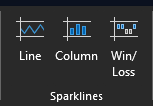Each supply chain is a bit different. There have been numerous occasions where I have heard variations of the phrase “we cannot apply [insert given concept here] because we are different from everyone else.” However, the same fundamental principles which broadly apply to a multitude of supply chains can often be applied to managing a specific supply chain. We simply have to think a little differently about the approach.
Let’s take Value Stream Mapping (VSM) as an example. While there are certainly formal ways to map out a value stream, an informal map is one of the best things you can do if you are brand new to managing a given supply chain. Most of the VSMs I have drawn with paper and pencil (yes, I use these ancient tools) have helped me better understand the flow of materials across a network, excluding elements such as information flow arrows and information systems in the initial drawing, or even at all.
Initial VSMs should also focus on information at a high level. Avoid concerning yourself with mapping out which pipes or conveyor belts move material from point A to point B; simply start with mapping that material starts at point A, then moves to point B. Fill in the details later if they are important.
If you know enough to be dangerous, you can try mapping this out without help from anyone, but always test your assumptions by showing your drawings to someone who knows the detail. If you are not feeling crafty, coordinate with someone to draw out the process. Maybe they already have these maps available, but don’t cheat yourself! Practice mapping out the flow of material or information in a way that makes sense for you to help build your VSM skill and reinforce your learning.
Generating a VSM has value beyond your own understanding of a supply chain. Here are some other use cases for drawing out a VSM, but do not limit yourself to only what is listed below:
- Educational: role transitions as you move to a different role and are training your replacement or for sharing with other team members.
- Problem solving: identifying areas of material or information bottlenecks.
- Projects: creating the “current state” and “target state” related to how a project will impact a supply chain.

